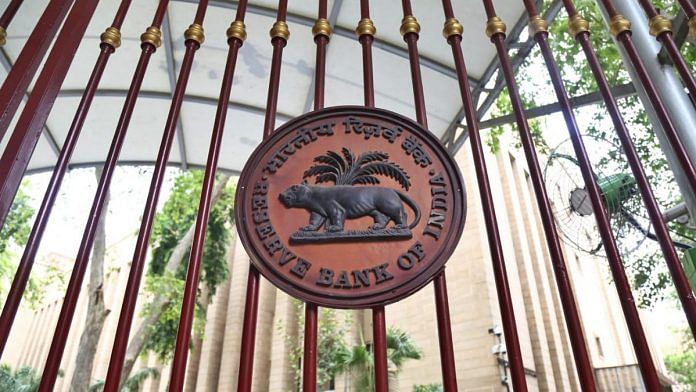Mumbai: India’s central bank may abandon years of austerity to vacuum up government debt directly after Prime Minister Narendra Modi’s administration raised its borrowing target to $159 billion, according to market participants.
Options being touted include increasing the use of tools already deployed, such as open-market purchases of bonds and Federal Reserve-style ‘Operation Twist,’ according to DBS Bank Ltd.’s Radhika Rao. If required, even primary market purchases or private placements could be considered, she said.
The Reserve Bank of India hasn’t directly bought sovereign debt since a law barring the practice came into effect in April 2006. But given the need for massive state spending to lift Asia’s third-largest economy from the pandemic-induced crisis, even officials who crafted the tougher rules have joined the growing number of advocates urging the RBI to buy the nation’s debt as it mulls more policy responses.
“The RBI will be concerned about market stability to ensure yields don’t spike and hamper monetary transmission,” said Shailendra Jhingan, chief executive officer at ICICI Securities Primary Dealership Ltd. “We expect OMO purchases to be the preferred route.”
Central banks across Asia have already been challenging taboos and creeping closer to monetization of debt. Indonesia has broken new ground in directly bidding at auctions while the Reserve Bank of New Zealand has said it is open-minded about such purchases.
In the absence of any RBI action over the weekend, yields are expected to see a shrp jump when trading resumes later Monday. Benchmark yields may rise to as much as 6.5% in the near term, according to Nirmal Bang Equities Pvt.
Bloomberg calculates the RBI’s share of the government debt next year may exceed its current 15% holding, bigger than Bank Indonesia’s estimated 11% and closer to Australia and New Zealand’s 24% and 39%, respectively.
Also read: Modi govt’s colour-coded reopening of economy can’t hide the massive Covid bill on its tab
‘Stealth Support’
Late on Friday, the government said it will borrow 12 trillion rupees ($159 billion) in the year that began April 1, 54% more than budgeted. Half of this will be raised by the end of September. The increase — which signals a major slippage in fiscal deficit amid rising pressure on revenue — will boost the size of weekly auctions to 300 billion rupees.
With states also facing a fiscal crunch, the gross combined borrowing may be as much as 20 trillion rupees this year, according to IDFC Bank Ltd.
Traders had factored in a spike in borrowing; they just didn’t think it would come so soon. Hours before the statement from New Delhi, bond yields in Mumbai had fallen to the lowest in over a decade, as the market cheered the launch of a new 10-year paper. The optimism also reflected bets that the RBI would continue what DBS calls “stealth support.”
Data show the RBI bought a net 910 billion rupees of debt in the secondary market in April.
ICICI PD’s Jhingan said the entire extra borrowing will now have to be picked up by the central bank to ensure the market stays stable. That’s because all of the RBI’s measures since the beginning of March — slashing its policy rate, 400 billion rupees of announced OMOs and a 100-billion rupee Operation Twist — have failed to meaningfully reduce borrowing costs for companies.
The RBI has been providing its support, with its balancesheet expanding from 25.7% of GDP as of May from 21.7% in Dec. 2019, IDFC Bank said. The increase represents support provided by its long-term repo operations, targeted lending operations, open-market purchases and higher ways and means advances, it said.
Governor Shaktikanta Das may start getting uncomfortable if the ratio of rupee-asset holdings approaches 30% of the RBI’s AAA-rated foreign-currency reserves, Saugata Bhattacharya, chief economist at Axis Bank Ltd., wrote in a note.
The RBI didn’t say whether the government’s additional borrowing will only make up for lost revenue or whether it would finance new spending. Barclays Plc pegs the budget deficit at 5.75% of gross domestic product this financial year versus the 3.5% target.
“We believe RBI stands ready to monetize a big portion of this slippage,” said Ananth Narayan, a professor of finance and former head of trading for South Asia at Standard Chartered Plc. “So far, it has already effectively monetized the deficit to the extent of 2% of GDP.”
Also read: Why India’s rural economy stands to gain after the lockdown is lifted




Other than normal days of months we need events like new year diwali where buying can be favoured imagine all the products in the market being used by everyone and every year new Updation of products in terms quality and quantity can really bost marketing advertising can bost sales profit can return to banks can pay debt. GST + direct + indirect taxes can spend government spending so government would grow strong and full fill the public interest export will enhance rupee important will fdi. Foreign currency will generate more option and peace into the world time for manager to structure the economy in daily sales number of need and demand. Tourism can be boosted with increase profit salary. Industry will have to set up and give salary for fare and humongous profit. Take for e.g. any packet of chips if eaten every is going to fall short as the truck can easily reach the far parts of India where there are no villages a packet of chips company can help the economy to grow at speedy rates and then we have bunches of smes and macro micro industries from food to milk chip in mobile to women products and gold fuel cloths specs airlines cars byks IT software applications digital payment. SMILE and learn for new innovation.